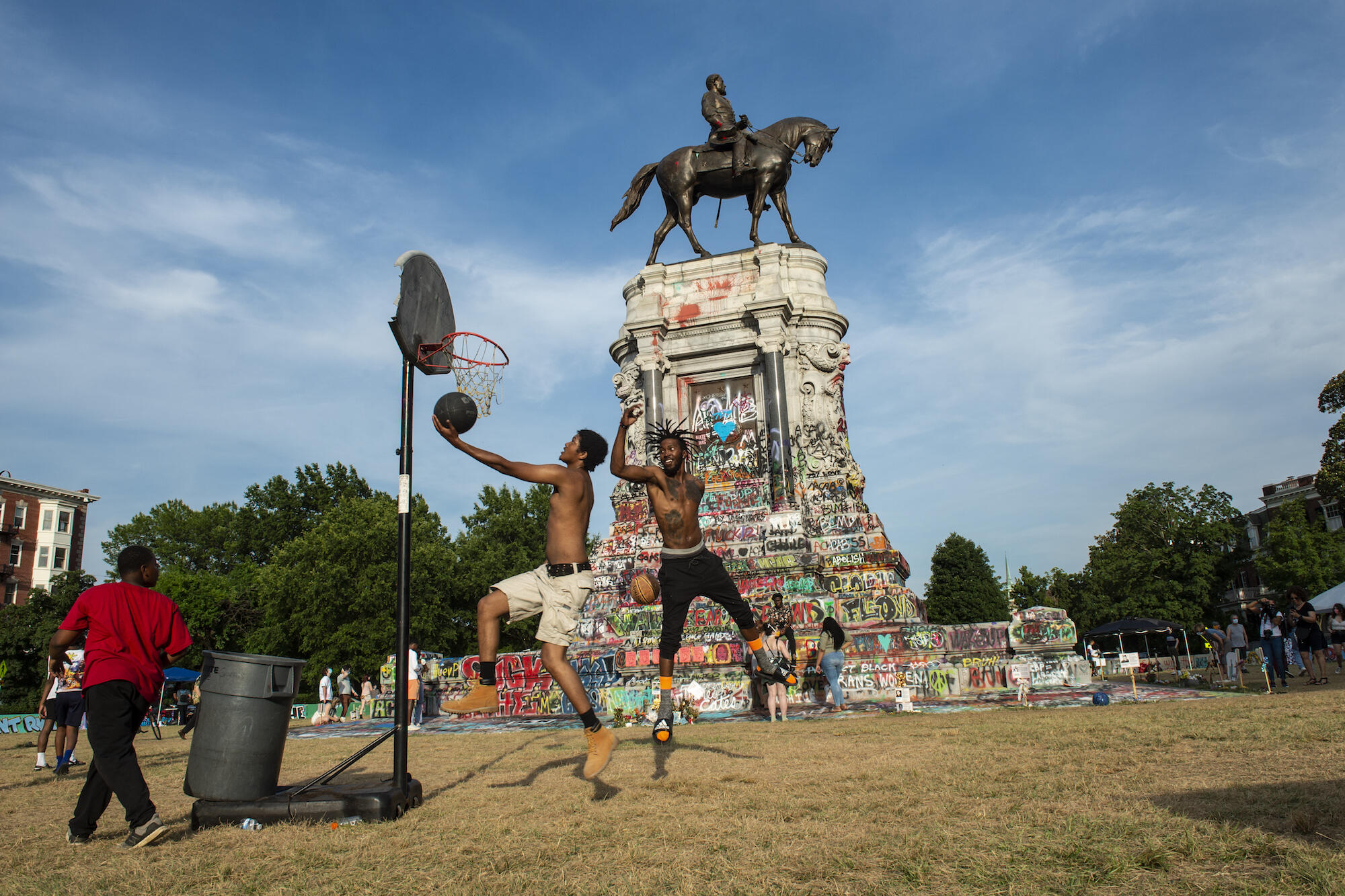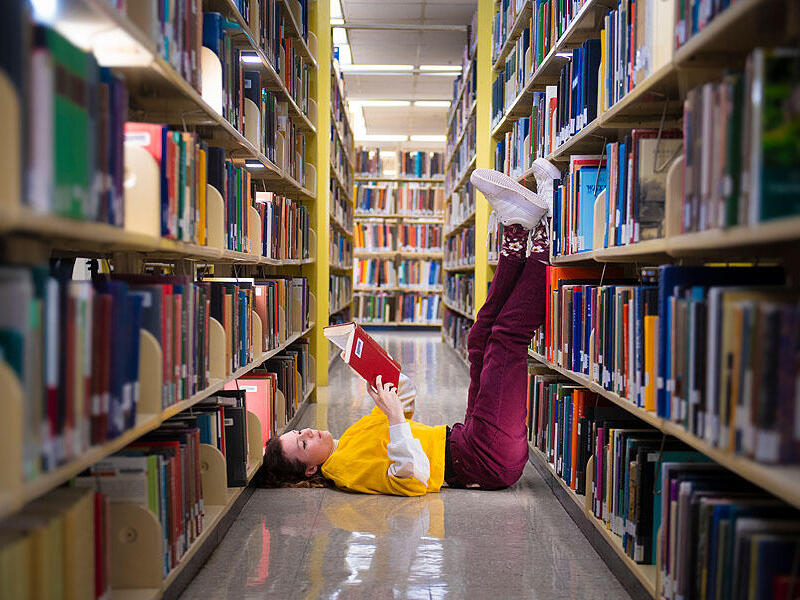
May 3, 2021
A VCU class at the Virginia Museum of Fine Arts is making the invisible visible
Share this story
Ali Funk, a freshman at Virginia Commonwealth University, has a new perspective on both current events and Richmond’s complicated history thanks to her Focused Inquiry classes. The courses through VCU’s University College are part of the core curriculum for first- and second-year students.
This semester Funk and her classmates worked individually on a four-week project framing three local objects and spaces against the protests that took place last summer: artist Kehinde Wiley's painting, “Willem van Heythuysen," and his sculpture, "Rumors of War," both located at the Virginia Museum of Fine Arts, and the transformation of the Robert E. Lee Memorial on Monument Avenue to Marcus-David Peters Circle.
“The class has encouraged me to ask meaningful and non-obvious questions and strengthened my critical thinking skills,” said Funk, a psychology major in the College of Humanities and Sciences. "The feedback I have received on my essays and projects has better prepared me for college-level assignments.”
The project was inspired, in part, by the prologue of Ralph Ellison’s “Invisible Man” where the narrator laments that “I am invisible, simply because people refuse to see me.”
“The purpose is to study what we call disruption — changing how we think and behave,” said instructor Christopher Martiniano. “It’s about making what was formerly invisible visible. This project illustrates how particular communities, historically in Richmond, have been made invisible and gives students the opportunity to show how these three, disruptive objects and spaces make people of color seen.”

The placement of both “Rumors of War” (located outside the VMFA entrance) and “Willem van Heythuysen” are important because they create a dialogue with the spaces around them, including Monument Avenue and VMFA’s galleries and grounds, said Kathy Parrish, college and adult group coordinator for the museum.
“Kehinde Wiley is known for his reinterpretation of historical artworks where he replaces traditional white subjects with contemporary Black figures in their place,” Parrish said. “VMFA has two works in the collection by Wiley where he implements his own take on traditional European portraiture.”
“Rumors of War” is the artist’s direct response to the Confederate sculptures that populate the United States, particularly in the South, Parrish said. “Willem van Heythuysen,” meanwhile, hangs in the VFMA’s Tapestry Hall where European tapestries hang among traditional 17th to 19th century European paintings.
“Wiley's painting is a reimagining of Frans Hals’ work, by the same name, that is in the collection of the Alte Pinakothek in Munich, Germany,” Parrish said. “Wiley places a fashionably dressed Black man in the same pose, leaning on a sword, as the original Willem van Heythuysen is seen doing in his portrait made in 1625. Ultimately, by placing an ordinary person of color within the traditional canon of Western art, Wiley reframes the way viewers interpret Black male identity. The placement of this painting in VMFA's Tapestry Hall invites viewers to consider what images have been included and excluded from art and history.”
The placing of the painting “broke every rule of curatorial strategy at a museum,” Martiniano said.

Martiniano reached out to Parrish to coordinate customized tours of Wiley's works at the VMFA. Planning this year’s tour was more difficult because of the pandemic, so Parrish had Sarah Rasich, the museum’s distance learning content specialist, use a camera on a rolling cart to record a walk through Tapestry Hall.
“It followed the path a patron would follow, providing a 360-degree view,” Martiniano said. “We didn’t have to do that with his statue outside because there has been so many photographs of it.”
Meanwhile, for a look at the transformation of the Robert E. Lee Memorial to Marcus-David Peters Circle, Martiniano enlisted the help of Richard Quarshie, an academic adviser in VCU’s interdisciplinary studies program, and his drone to provide a view inside the fence surrounding the circle as well as a 360-degree closeup video of the space. Students then worked on translating a traditional academic essay into public-facing websites (Funk’s is entitled “Reclaiming Richmond”).
“It’s the same idea of making things visible that aren’t,” Martiniano said, adding he will adapt the project for his summer course as well as for the 2021-22 school year.



Having these three spaces to talk with students about the concept of disruption was tangible, Martiniano said.
“These were living, breathing things that were constantly evolving with the people in the community,” he said.
Martiniano, who joined VCU in 2019, said the project is in no way exceptional when it comes to department projects.
“Our faculty aspires to create provocative, community-focused and experiential learning opportunities for our students that take advantage of the city we live in,” he said. “I am continually inspired by my colleagues and their tremendous creativity when developing coursework.”
Subscribe to VCU News
Subscribe to VCU News at newsletter.vcu.edu and receive a selection of stories, videos, photos, news clips and event listings in your inbox.








